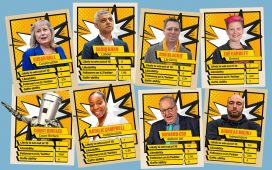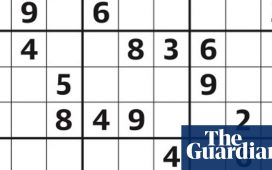Mo Willems’s early attempts at writing and illustrating children’s books failed. Yes, publishers rejected them, but he’s quick to point out that even some of his successful books initially met with rejection from the publishing community. The bigger issue, he says, is that they weren’t any good.
“They were trying to teach. They were trying to tell,” he says. “My credo is that I always think of my audience, but I never think for my audience. And there’s a lot of stumbling blocks before you get to that degree of understanding or at least self-awareness.”
Mr. Willems, who spent years writing for “Sesame Street” and programs on Nickelodeon and Cartoon Network, published his first book, “Don’t Let the Pigeon Drive the Bus!” in 2003. In it, a feisty blue pigeon makes his case directly to the reader, saying: “I’ll be careful” and “I tell you what: I’ll just steer.”
‘If you’re really, really looking at and communicating with and talking to a kid, it’s incredibly empowering,’ said Mo Willems, seen in 2015.
Photo:
Jo Chattman
The book received a Caldecott Honor—the 51-year-old author now has three. It sparked a series with titles such as “The Pigeon Needs a Bath!” “Don’t Let the Pigeon Stay Up Late!” and “Don’t Let the Pigeon Finish This Activity Book!”
Five years after his last pigeon book, Mr. Willems is about to publish the seventh picture book in the series, “The Pigeon HAS to Go to School!” in which his protagonist makes a case for truancy: “I already know EVERYTHING!” “What if I learn too much!?!”
“The pigeon books come from me asking a question,” he says. “The pigeon bath book is about transitions. Why is it so hard for me to be doing one thing and then go and do another? Why am I resistant to, you know, going to the theater, when … in the end I know I’m gonna love it? And this pigeon book, ‘The Pigeon HAS to Go to School,’ is about dealing with uncertainty.”
Mr. Willems’s dozens of other books include series such as “Elephant & Piggie” and “Knuffle Bunny.” He spoke with the Journal recently about his work and why everyone should be drawing. Edited excerpts:
What did working on “Sesame Street” teach you about talking to children?
I don’t know that I talk to children (in my books). I talk about things that matter to me and things that interest me and scare me and excite me. And I hope that what I’m talking about is interesting to kids. But I’m not telling kids what to think. I’m—maybe, at the very worst—telling them, showing them how I think.
Your pigeon talks directly to the reader and asks questions of the reader, which seems like a sign of respect that kids appreciate.
I certainly want to be respectful to kids. I mean, look, the pigeon is a stinker and he’s gonna do whatever he can to get what he wants. So if that means breaking the fourth wall, he’s quite happy to do that.
What did you like about “Mister Rogers’ Neighborhood?”
I think that there were two different approaches to how to interact with your audience through TV. And Fred Rogers broke the fourth wall constantly. He showed how the show was made, talked about the musicians on the show. He was always breaking it down and showing the pieces. I find that to be really, really liberating. “Sesame Street” was very funny and had a lot of effect. Hopefully I’m somewhere in between those two things. I want my books to be fast and funny, but I also purposely design all my characters so that a 5-year-old can draw them and create their own stories. I really want my books not just to be read, but also to be played.
‘The Pigeon HAS to Go to School’ features a feisty bird.
Photo:
Mo Willems
What’s the power of breaking the fourth wall in children’s literature and programming?
I think that that means that the kid is being seen. How often is a child ignored? How often when you tell a kid what to do are you not paying attention to the kid, you’re just paying attention to your wishes, what’s more convenient for you? But if you’re really, really looking at and communicating with and talking to a kid, it’s incredibly empowering.
That’s what I was getting at earlier, about what you do with your pigeon. But it seems like that was not what you were thinking about when you did it.
There’s a multiplicity of things. Here’s the other thing: I make the books. I can’t explain how they work. That’s asking too much. At a certain point you should be satisfied. I made the book. That’s all I’m capable of. I can’t tell you why they work. I can barely make them.
Is your pigeon workbook another way of breaking things down and opening up the process to kids?
Yeah. Drawing is a physical form of empathy and it’s something that everyone should be doing. Adults, kids, everybody, whether you’re going to do it for your life or not. That’s not the point. The point is to be able to go out and to draw and to think and to be with other people and to doodle or to sketch in a cafe. This is liberating. This is a way of connecting with yourself and with others.
Does that mean you’re an advocate for the adult coloring movement?
All of that stuff. Dads making drawings on lunch bags for their kids, that’s great. Here’s the thing: We’re setting an example. If you want your kid to be creative and you’re sitting and looking at your phone, your kid’s not going to be creative. Your kid’s going to look at the phone.
But if you’re drawing on a lunch bag…
Your kid is going to start drawing. If a kid asks you for a sandwich or something and you say “Not now, I’m drawing,” suddenly your kid’s like: “Oh, wow, drawing’s more important than making me a sandwich.This seems like a cool activity.”
WHO IS HE?
- Name: Mo Willems
- What He Does: Author and illustrator of children’s books about an elephant, a piggie and a pigeon, among others.
- How He Got There: Mr. Willems’ 2003 debut, “Don’t Let the Pigeon Drive the Bus!” was a best seller and earned his first of three Caldecott Honors.
- His Big Break: Writing and making films for “Sesame Street.” On the job, he says, “I learned that I wanted to write for children.” Part of the appeal, he adds, is that “kids don’t use cultural modifiers. So you’re stuck with these very basic emotional powers. You’re talking about anger and love and jealousy and happiness and friendship and pain and loneliness. And those are the things that interest me more than who has got the number-one hit on the radio.”







